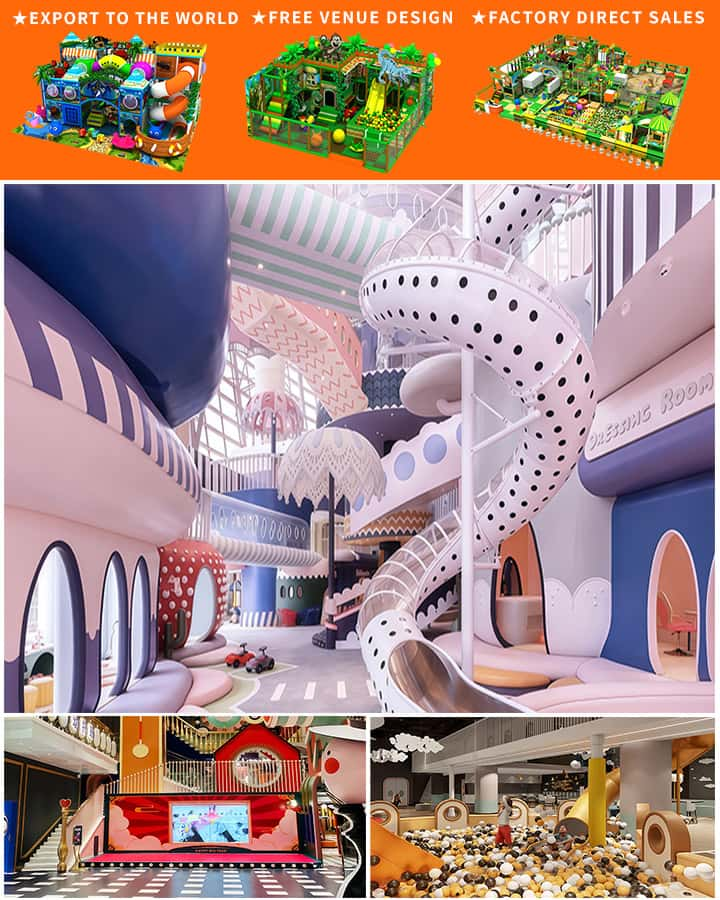When it comes to setting up a successful indoor playground, selecting the right location is crucial. The perfect spot can significantly impact your business’s visibility, accessibility, and overall success. This guide will walk you through key considerations for choosing an ideal location for your indoor playground, ensuring that families find and enjoy your facility for years to come.
Assessing Visibility and Accessibility
Visibility is paramount for attracting visitors. Look for a location with high foot traffic, such as shopping malls, busy commercial areas, or family-oriented neighborhoods. High visibility not only draws more customers but also builds brand recognition over time. Additionally, ensure that your indoor playground is easily accessible via major roads and highways, making it convenient for families from various parts of town or nearby cities to visit.
Evaluating Demographics
Understanding the demographics of your potential customers is essential. Analyze local population data to gauge the number of children in the area and their age ranges. Consider the income levels of residents, as this will influence their spending on recreational activities. Areas with higher median incomes might be more likely to support a premium indoor playground experience. Moreover, proximity to schools, daycare centers, and residential areas ensures a ready-made audience of parents and children who could frequent your playground.

Safety and Regulations
Safety cannot be compromised when selecting a location. Choose a site that complies with local zoning laws and building codes related to recreational facilities. Ensure the space meets safety standards for indoor playgrounds, including adequate ventilation, fire exits, and non-toxic materials. It’s beneficial to consult with local authorities early in the planning process to preemptively address any regulatory hurdles.
Space and Layout Requirements
The size and layout of your indoor playground are critical. You need sufficient space to house a variety of play structures without feeling cramped. Ideally, the location should have high ceilings to accommodate multi-level play equipment, which adds to the excitement and diversity of the playground. Additionally, consider layout flexibility; you may want to reconfigure sections of the playground periodically to keep the environment fresh and engaging for returning visitors.
Competition and Market Analysis
Analyzing the competition in your chosen location helps in carving out a niche for your indoor playground. Research existing family entertainment options in the vicinity. Are there already established indoor playgrounds or similar attractions? If so, understand what they offer and identify opportunities to differentiate your business. Offering unique features such as themed play areas, educational workshops, or exclusive events can set your playground apart.
Cost Implications
Budget plays a significant role in finalizing your location. Factor in leasing costs, utilities, and maintenance expenses associated with the property. While prime locations might have higher overheads, they often translate to greater footfall and revenue. However, be realistic about what your budget can handle without compromising the quality of your services and facilities. Sometimes, slightly off-center locations with reasonable rent can provide better value for money if they meet most other criteria effectively.
Community Engagement and Promotion
Lastly, consider the community aspect of your indoor playground’s location. Areas with strong community ties offer opportunities for partnerships with local schools, PTA groups, and businesses, fostering a loyal customer base. Hosting community events or sponsoring local initiatives can enhance your playground’s reputation and integrate it into the fabric of the community.
Conclusion
Selecting the perfect location for an indoor playground involves a blend of strategic analysis and practical considerations. By focusing on visibility, demographics, safety, space requirements, competition, cost, and community engagement, you can choose a site that maximizes your playground’s potential for success. With careful planning and execution, your indoor playground can become a beloved destination for families seeking fun and safe recreational activities.




